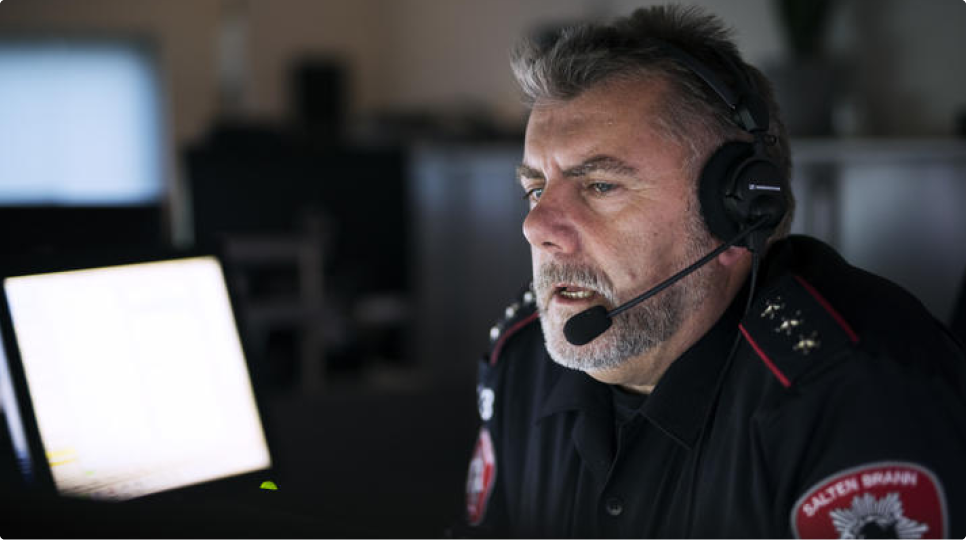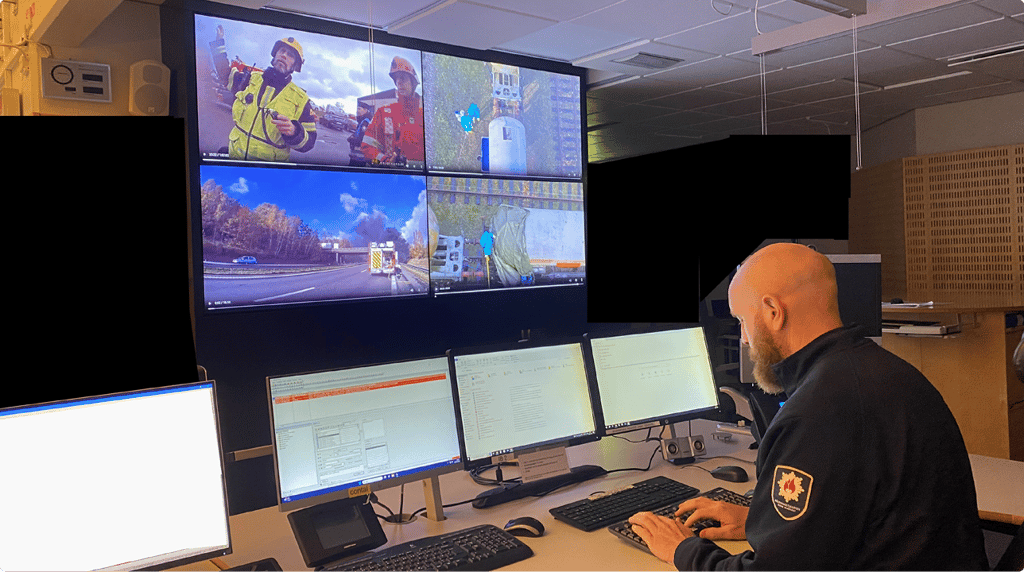Live video on all 112 calls: North Denmark Region introduces IncidentShare as standard procedure
A new standard operating procedure at the North Jutland Region's emergency call center gives experienced nurses and paramedics a visual and necessary overview via live video. The result is life-saving assessments and better utilisation of healthcare resources.

On a 112 call, every second counts. They know this at the Prehospital Services, Emergency Medical Dispatch Center (AMK) in the North Denmark Region, which has chosen to introduce a new standard procedure for all calls. A text message with a link to a live video is now sent to the caller as a standard part of the assessment and handling of all calls. This allows the health visitor to quickly get a visual overview of the situation of the person in distress.
The Emergency Medical Dispatch Center (AMK), of the Region is the coordinating unit for all pre-hospital services with ambulances, emergency physician cars and general transport for the sick.

"Live video allows us to use our sense of sight at the scene. The healthcare professional can see the situation and the caller instead of only being able to listen to a verbal description. In these situations, video serves as decision support when we need to assess what help is needed and how quickly it should arrive," says Anette Ladefoged, Quality and Development Nurse at AMK Nordjylland.
A fixed procedure that makes sense
The North Denmark Region has been using the IncidentShare live video solution since 2019, but until recently it has been a voluntary offer for the health visitors. Now the solution has been made a standard procedure whenever possible, and it makes a lot of sense for AMK Nordjylland.
"We find that video calls support our decision-making process by giving us a clearer picture of the situation. We can see if a child, described as unconscious, is actually fully alert, or if an elderly person appears awake and responsive, even when relatives express great concern. This means we can dispatch the right help more quickly – while also avoiding unnecessary emergency responses," explains Anette Ladefoged.
Valuable support in acute incidents
Especially in emergency situations, such as cardiac arrest or traffic accidents, the live video solution, IncidentShare, has proven to be extremely useful. Dispatchers can quickly get an overview of the scene of the accident and the number of cars involved, so the caller doesn't have to spend valuable time on long explanations.
"In the case of cardiac arrest, we have found that we can guide better when we can see the patient. For example, we recently corrected a CPR that was being performed on a couch and instead got the patient down on the floor - a hard surface that is better suited for CPR. It's the small details we see and don't hear that can ultimately save lives," says Anette Ladefoged.
Clear communication and new technology working together to save lives
To fully utilize the potential of live video, AMK has worked on how they present the solution to the caller. The call handlers always start by saying: "You have received an SMS" instead of "I have sent you a link".
"If we say they've received a link, many people think they've received an email and start checking their inbox," says Anette Ladefoged and continues: "It's about saving precious seconds. Precise communication is crucial when people are in a stressful situation. With clear communication and new technology that gives us an extra sense, we are in the best position to save lives now and in the future."


